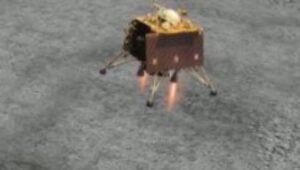
New Delhi: India’s lunar rover, part of the Chandrayaan-3 mission, has successfully identified the presence of various elements including oxygen, titanium, and aluminium on the moon’s surface. The Indian space agency, ISRO, has reported that ongoing investigations are also being conducted to ascertain the presence of hydrogen in the lunar region.
The groundbreaking findings were made possible through the utilization of the Laser-Induced Breakdown Spectroscopy (LIBS) instrument on the Chandrayaan-3 rover. This instrument facilitated the first-ever in-situ measurements of the elemental composition of the lunar surface, specifically near the south pole.
The significance of these measurements lies in their ability to definitively confirm the presence of sulphur in the designated area. This confirmation was not attainable using the instruments carried by the orbiters.
LIBS operates as a scientific method to analyze material composition by subjecting them to high-intensity laser pulses. The laser is focused onto a material’s surface, generating localized plasma of high temperature. The collected light from this plasma is then analyzed by detectors, revealing characteristic sets of wavelengths emitted by different elements when in a plasma state.
As a result, ISRO’s preliminary analyses have unveiled the existence of aluminium (Al), sulphur (S), calcium (Ca), iron (Fe), chromium (Cr), and titanium (Ti) on the moon’s surface. Subsequent measurements have indicated the presence of manganese (Mn), silicon (Si), and oxygen (O).




